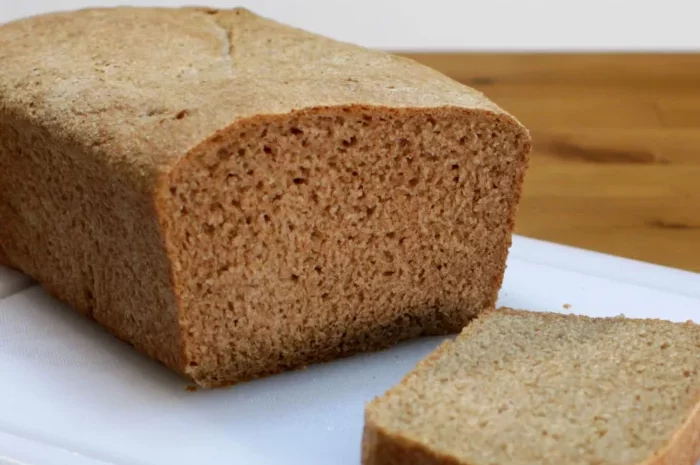Bread is a staple in many diets around the world, but for individuals with diabetes, selecting the right type of bread can be a crucial decision. The type of bread consumed can have a significant impact on blood glucose levels, overall health, and well-being. This article will explore the best types of bread for diabetics, how to make informed choices, and tips for incorporating bread into a balanced, diabetes-friendly diet.
Understanding Carbohydrates and Blood Sugar
Before delving into the specifics of bread selection, it’s essential to understand the relationship between carbohydrates and blood sugar. Carbohydrates are the body’s primary source of energy, but they also have the most significant impact on blood glucose levels. When carbohydrates are consumed, they are broken down into glucose, which enters the bloodstream and raises blood sugar levels.
For individuals with diabetes, the body either does not produce enough insulin (as in type 1 diabetes) or cannot effectively use the insulin it produces (as in type 2 diabetes). This makes managing blood sugar levels crucial to avoid complications such as hyperglycemia (high blood sugar), hypoglycemia (low blood sugar), and long-term issues like heart disease, kidney damage, and neuropathy.
The Glycemic Index: A Tool for Choosing the Right Bread
One of the most effective tools for determining how a food will impact blood sugar is the glycemic index (GI). The glycemic index measures how quickly and how much a food raises blood sugar levels compared to pure glucose, which has a GI of 100. Foods are ranked on a scale from 0 to 100, with lower values indicating a slower, more gradual increase in blood sugar.
- Low GI foods: GI of 55 or less
- Medium GI foods: GI of 56-69
- High GI foods: GI of 70 or more
For diabetics, choosing low to medium GI foods is advisable, as they produce a more gradual rise in blood sugar levels, reducing the risk of spikes and crashes.
Whole Grain vs. Refined Grain Bread
The type of grain used in bread is a key factor that influences its glycemic index. Whole grains are unprocessed and retain all parts of the grain kernel: the bran, germ, and endosperm. In contrast, refined grains have been processed to remove the bran and germ, resulting in a finer texture and longer shelf life but also stripping away essential nutrients and fiber.
Whole grain bread has a lower GI compared to refined grain bread. The presence of fiber in whole grains slows down the digestion and absorption of carbohydrates, leading to a more gradual increase in blood sugar. Additionally, whole grains contain vitamins, minerals, and antioxidants that contribute to overall health.
Refined grain bread, such as white bread, has a higher GI because it lacks fiber and is quickly digested, causing a rapid spike in blood sugar. Consistently consuming high-GI foods can make blood sugar control more challenging and increase the risk of diabetes-related complications.
The Best Types of Bread for Diabetics
When selecting bread, diabetics should opt for varieties that are low on the glycemic index, high in fiber, and made from whole grains. Here are some of the best options:
1. Whole Wheat Bread
Whole wheat bread is made from whole wheat flour, which includes the entire grain kernel. This type of bread is high in fiber, vitamins, and minerals, making it a healthier choice for diabetics. The fiber content in whole wheat bread helps slow down the absorption of carbohydrates, leading to a more stable blood sugar response.
When choosing whole wheat bread, it’s important to read labels carefully. Some breads labeled as “whole wheat” may still contain added sugars or refined flours, which can increase the glycemic index. Look for bread that lists whole wheat flour as the first ingredient and has minimal added sugars.
2. Multigrain Bread
Multigrain bread is made from two or more types of grains, such as wheat, oats, barley, millet, and flaxseed. When these grains are used in their whole form, multigrain bread can be an excellent choice for diabetics. The variety of grains provides a mix of nutrients, including fiber, protein, and healthy fats, all of which contribute to a lower glycemic index.
However, not all multigrain breads are created equal. Some may contain refined grains or added sugars, so it’s crucial to check the ingredient list and nutritional information. The best multigrain breads for diabetics are those that are made with whole grains and have a high fiber content.
3. Sourdough Bread
Sourdough bread is made through a fermentation process that uses naturally occurring lactobacilli and yeast. This process gives sourdough its characteristic tangy flavor and chewy texture. Interestingly, the fermentation process also lowers the bread’s glycemic index, making it a better option for diabetics compared to traditional white bread.
The fermentation process partially breaks down the starches in the flour, resulting in a lower impact on blood sugar levels. Additionally, sourdough bread has a higher content of resistant starch, a type of carbohydrate that resists digestion and has a minimal effect on blood sugar.
4. Rye Bread
Rye bread is made from rye flour, which is denser and darker than wheat flour. Rye has a lower glycemic index compared to wheat, making rye bread a suitable choice for diabetics. The high fiber content in rye bread helps slow down the digestion of carbohydrates and promotes a steady release of glucose into the bloodstream.
Rye bread is also rich in vitamins and minerals, including magnesium, which plays a role in insulin sensitivity. When choosing rye bread, opt for 100% whole rye or pumpernickel bread, which is made from whole rye grains and has a lower glycemic index.
5. Oat Bread
Oat bread is made from oat flour or a combination of oats and wheat flour. Oats are known for their high fiber content, particularly beta-glucan, a type of soluble fiber that has been shown to improve blood sugar control and lower cholesterol levels.
The fiber in oat bread helps slow the absorption of carbohydrates, leading to a lower glycemic response. Oat bread can be a healthy addition to a diabetes-friendly diet, especially when made with whole oats and minimal added sugars.
6. Ezekiel Bread
Ezekiel bread is a type of sprouted grain bread made from a variety of grains and legumes, including wheat, barley, spelt, millet, lentils, and soybeans. The grains and legumes are sprouted before being ground into flour, which increases the bread’s nutrient content and lowers its glycemic index.
Sprouting grains enhances their nutritional profile by increasing the availability of vitamins, minerals, and antioxidants. Ezekiel bread is also high in fiber and protein, making it a filling and nutritious choice for diabetics.
7. Low-Carb Bread
For diabetics who are following a low-carbohydrate diet, low-carb bread can be an excellent option. These breads are typically made with ingredients like almond flour, coconut flour, flaxseed meal, and psyllium husk, which are low in carbohydrates and high in fiber.
Low-carb breads have a minimal impact on blood sugar levels and can help diabetics maintain better glycemic control. However, it’s important to choose low-carb breads that are made with wholesome ingredients and do not contain artificial additives or preservatives.
Bread to Avoid: High-Glycemic and Low-Fiber Options
While there are many types of bread that can be included in a diabetes-friendly diet, there are also some that should be avoided due to their high glycemic index and low nutritional value. Here are some types of bread that diabetics should steer clear of:
1. White Bread
White bread is made from refined wheat flour, which has had the bran and germ removed. This process strips away most of the fiber, vitamins, and minerals, leaving a product that is low in nutrients and high in carbohydrates. White bread has a high glycemic index, meaning it causes a rapid spike in blood sugar levels.
2. Bagels
Bagels are typically made from refined wheat flour and have a dense, chewy texture. They are often high in carbohydrates and calories, making them a poor choice for diabetics. Even whole wheat bagels can have a significant impact on blood sugar due to their large portion size.
3. Flavored and Sweetened Bread
Bread that is flavored or sweetened, such as cinnamon raisin bread, honey wheat bread, or brioche, is often high in added sugars and has a higher glycemic index. These types of bread can cause rapid spikes in blood sugar and should be limited or avoided in a diabetes-friendly diet.
4. Gluten-Free Bread
Gluten-free bread is often made from refined flours like rice flour, tapioca starch, and potato starch, which have a high glycemic index and low fiber content. While gluten-free bread is essential for individuals with celiac disease or gluten sensitivity, it may not be the best option for diabetics unless it is made from whole grains and high-fiber ingredients.
Tips for Incorporating Bread into a Diabetes-Friendly Diet
While choosing the right type of bread is important, it’s also essential to consider portion size and what the bread is paired with. Here are some tips for incorporating bread into a balanced, diabetes-friendly diet:
1. Watch Portion Sizes
Even the healthiest types of bread can raise blood sugar levels if consumed in large quantities. It’s important to stick to recommended portion sizes, typically one or two slices per meal. Reading nutrition labels can help determine the appropriate serving size and carbohydrate content.
2. Pair Bread with Protein and Healthy Fats
Pairing bread with protein and healthy fats can help slow down the absorption of carbohydrates and prevent rapid spikes in blood sugar. For example, spreading avocado on whole grain toast or pairing a slice of multigrain bread with a boiled egg can create a balanced meal that is less likely to cause blood sugar fluctuations.
3. Choose High-Fiber Bread
When selecting bread, look for options that are high in fiber, ideally with at least 3 grams of fiber per slice. Fiber not only helps regulate blood sugar levels but also promotes satiety, helping you feel fuller for longer.
4. Experiment with Alternative Bread Options
If you’re looking to reduce your carbohydrate intake, consider experimenting with alternative bread options such as low-carb bread, lettuce wraps, or cauliflower-based bread. These alternatives can provide the satisfaction of bread without the high carbohydrate content.
5. Monitor Blood Sugar Levels
As with any dietary change, it’s important for diabetics to monitor their blood sugar levels when introducing new types of bread into their diet. Keeping track of how different breads affect your blood sugar can help you make informed decisions and adjust your diet accordingly.
See also: What Diet to Follow for Diabetes
Conclusion: Making Informed Choices for Better Blood Sugar Control
For diabetics, managing blood sugar levels is a daily challenge that requires careful attention to diet, especially when it comes to carbohydrate-rich foods like bread. By choosing breads that are low on the glycemic index, high in fiber, and made from whole grains, diabetics can enjoy bread as part of a healthy, balanced diet.
Whole wheat bread, multigrain bread, sourdough bread, rye bread, oat bread, Ezekiel bread, and low-carb bread are all excellent choices for diabetics. These options provide essential nutrients while minimizing the impact on blood sugar levels. On the other hand, high-glycemic and low-fiber breads like white bread, bagels, flavored and sweetened bread, and some gluten-free breads should be limited or avoided.
Incorporating bread into a diabetes-friendly diet involves more than just choosing the right type of bread. Portion control, pairing bread with protein and healthy fats, and monitoring blood sugar levels are all important strategies for maintaining good glycemic control.
Ultimately, the key to a diabetes-friendly diet is making informed choices and being mindful of how different foods affect your body. With the right approach, bread can be enjoyed as part of a nutritious and balanced diet that supports overall health and well-being.
Related topics:



























